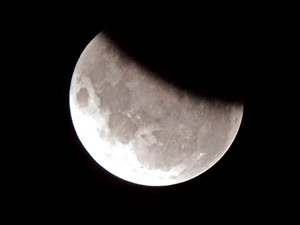Further proof that the Moon was created by massive collision
The idea that the Moon was created after a massive cosmic collision
between a Mars-sized object and the primordial Earth some 4.5bn years
ago has received its second boost in less than a week.
|

Researchers found the chemical signature within lunar rock
samples brought back to earth by the Apollo missions |
Scientists have detected the chemical signature of the ancient Earth,
as it was before the collision took place, in material found deep within
the planet’s mantle, which separates the Earth’s molten iron core from
the surface crust.
Last week, a separate team of researchers found the chemical
signature of the ancient object itself, known as Theia, within lunar
rock samples brought back to earth by the Apollo missions 40 years ago.
The second piece of evidence comes from a study of unexplained ratios of
chemical isotopes in deep mantle rock which scientists believe are the
signature of the primordial Earth before it was hit by Theia. The
collision would have generated enough energy to melt the entire planet
but the researchers believe that although material would have vaporised
on the side of impact, some of the planet remained solid and intact on
the opposite hemisphere.
“The energy released by the impact between the Earth and Theia would
have been huge, certainly enough to melt the whole planet. But we
believe that the impact energy was not evenly distributed throughout the
ancient Earth,” said Prof Sujoy Mukhopadhyay of Harvard University.
“This means that a major part of the impacted hemisphere would probably
have been completely vaporised, but the opposite hemisphere would have
been partly shielded and would not have undergone complete melting,”
Prof Mukhopadhyay.
The study found that isotope ratios of the gases neon and helium
differed significantly depending on whether they came from the shallow
mantle or the deeper mantle of the Earth - which indicates a different
origin.
“This implies that the last giant impact did not completely mix the
mantle and there was not a whole mantle-magma ocean,” Prof Mukhopadhyay
said.
“If the theory is proven correct, then we may be seeing echoes of the
ancient Earth, from a time before the collision,” he said.
Another piece of evidence comes from the analysis of xenon gas
isotopes, which result from from the slow radioactive decay of iodine
gas. This suggests that the formation of the more ancient part of the
mantle came within the first 100m years of the Earth’s origins - thereby
putting a possible date on the impact with Theia.
- The Independent
|

